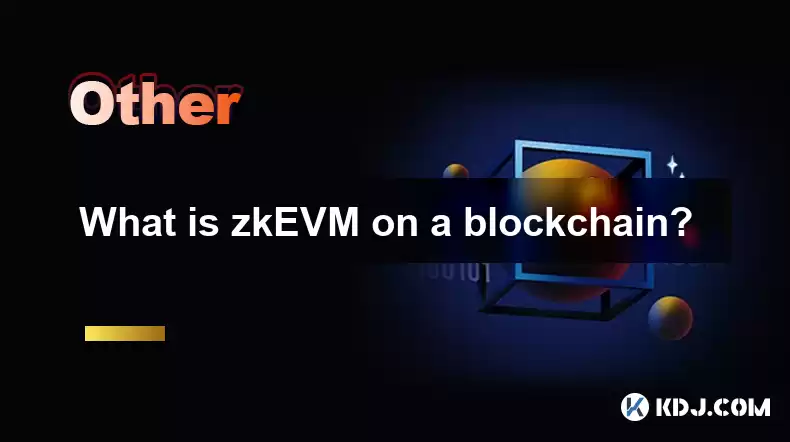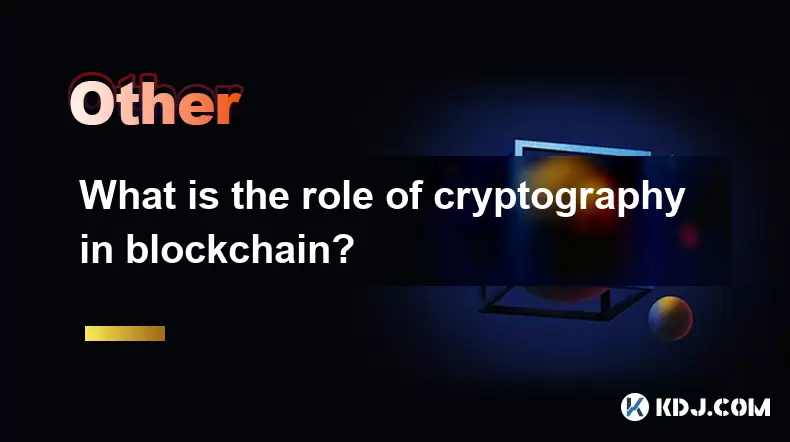-
 Bitcoin
Bitcoin $113900
0.47% -
 Ethereum
Ethereum $3491
-0.42% -
 XRP
XRP $2.876
-1.87% -
 Tether USDt
Tether USDt $1.000
0.03% -
 BNB
BNB $750.4
-0.49% -
 Solana
Solana $161.3
-1.76% -
 USDC
USDC $0.9999
0.01% -
 TRON
TRON $0.3242
-0.91% -
 Dogecoin
Dogecoin $0.1985
-0.19% -
 Cardano
Cardano $0.7241
1.49% -
 Hyperliquid
Hyperliquid $38.05
0.56% -
 Stellar
Stellar $0.3896
2.92% -
 Sui
Sui $3.442
0.61% -
 Chainlink
Chainlink $16.18
0.92% -
 Bitcoin Cash
Bitcoin Cash $541.0
0.51% -
 Hedera
Hedera $0.2427
2.67% -
 Ethena USDe
Ethena USDe $1.001
0.03% -
 Avalanche
Avalanche $21.39
-0.68% -
 Toncoin
Toncoin $3.669
2.25% -
 Litecoin
Litecoin $109.5
0.95% -
 UNUS SED LEO
UNUS SED LEO $8.966
0.11% -
 Shiba Inu
Shiba Inu $0.00001218
0.77% -
 Polkadot
Polkadot $3.598
1.23% -
 Uniswap
Uniswap $9.164
1.14% -
 Monero
Monero $297.7
1.21% -
 Dai
Dai $1.000
0.00% -
 Bitget Token
Bitget Token $4.328
0.84% -
 Pepe
Pepe $0.00001047
1.05% -
 Cronos
Cronos $0.1329
0.70% -
 Aave
Aave $257.6
1.03%
What is zkEVM on a blockchain?
zkEVM enhances Ethereum's scalability and privacy by executing smart contracts off-chain and verifying them with zero-knowledge proofs on-chain.
Apr 14, 2025 at 01:56 am

What is zkEVM on a Blockchain?
In the realm of blockchain technology, the term zkEVM stands out as a significant advancement in enhancing the scalability and privacy of Ethereum and other blockchain networks. zkEVM, or Zero-Knowledge Ethereum Virtual Machine, leverages the power of zero-knowledge proofs to execute smart contracts and transactions in a way that is both efficient and secure. This article will delve into the intricacies of zkEVM, exploring its mechanics, benefits, and implementation.
Understanding Zero-Knowledge Proofs
Before diving into zkEVM, it's essential to grasp the concept of zero-knowledge proofs. These are cryptographic methods that allow one party to prove to another that a given statement is true without revealing any information beyond the validity of the statement itself. In the context of blockchain, zero-knowledge proofs enable the verification of transactions without exposing the underlying data.
- zk-SNARKs and zk-STARKs are two types of zero-knowledge proofs commonly used in blockchain applications. They allow for the verification of computations in a way that is both succinct and non-interactive.
The Role of EVM in Blockchain
The Ethereum Virtual Machine (EVM) is a crucial component of the Ethereum blockchain, serving as the runtime environment for smart contracts. It executes bytecode, which represents the compiled smart contract code, and ensures that the execution is deterministic across all nodes on the network.
- The EVM's role is pivotal in maintaining the integrity and consistency of the Ethereum network, as it processes transactions and smart contract interactions.
zkEVM: Combining Zero-Knowledge Proofs with EVM
zkEVM emerges as a revolutionary concept by integrating zero-knowledge proofs with the EVM. This combination allows for the execution of smart contracts and transactions off-chain, with only the proof of their correctness being submitted to the blockchain. This significantly reduces the load on the network, thereby improving scalability.
- By executing computations off-chain and submitting only the proof, zkEVM minimizes the data that needs to be stored on the blockchain, which in turn reduces gas fees and transaction times.
Benefits of zkEVM
The implementation of zkEVM brings several advantages to the blockchain ecosystem:
- Scalability: By processing transactions off-chain and submitting only the proofs, zkEVM can handle a higher volume of transactions per second compared to traditional on-chain processing.
- Privacy: Transactions and smart contract executions are kept private, as only the proof of correctness is visible on the blockchain.
- Security: The use of zero-knowledge proofs ensures that the integrity of the transactions and smart contracts is maintained, even though they are executed off-chain.
Implementation of zkEVM
Implementing zkEVM involves several complex steps, but the core idea is to create a system where the EVM can run off-chain while still being verifiable on-chain:
- Off-chain Execution: Smart contracts and transactions are executed in an off-chain environment, which could be a specialized zkEVM node.
- Proof Generation: After execution, the zkEVM node generates a zero-knowledge proof that the computation was performed correctly.
- On-chain Verification: The proof is submitted to the blockchain, where it is verified by the network nodes. If the proof is valid, the transaction or smart contract execution is accepted.
Current Projects and Developments
Several projects are actively working on the development and implementation of zkEVM:
- Polygon Hermez: A layer 2 scaling solution for Ethereum that uses zkEVM to enhance scalability and privacy.
- StarkWare's StarkNet: Another layer 2 solution that employs zk-STARKs to provide scalable and private transactions on Ethereum.
- Matter Labs' zkSync: A zkEVM-based solution that aims to improve the scalability and user experience of Ethereum transactions.
Challenges and Considerations
While zkEVM offers promising solutions, there are several challenges to consider:
- Complexity: The development and integration of zkEVM require advanced cryptographic knowledge and significant computational resources.
- Adoption: Widespread adoption of zkEVM depends on the willingness of developers and users to embrace this new technology.
- Interoperability: Ensuring that zkEVM solutions can seamlessly integrate with existing blockchain infrastructure is a critical consideration.
Frequently Asked Questions
Q: How does zkEVM differ from traditional layer 2 solutions?
A: zkEVM differs from traditional layer 2 solutions primarily in its use of zero-knowledge proofs to verify off-chain computations. While other layer 2 solutions like sidechains or state channels may also process transactions off-chain, zkEVM ensures that these transactions are verifiable on the main blockchain without revealing the underlying data, providing an additional layer of privacy and security.
Q: Can zkEVM be used with blockchains other than Ethereum?
A: Yes, while zkEVM is primarily developed for Ethereum, the concept can be adapted for other blockchains that use similar virtual machine architectures. The key requirement is the ability to execute smart contracts and transactions off-chain and then submit zero-knowledge proofs for on-chain verification.
Q: What are the potential risks associated with zkEVM?
A: The main risks associated with zkEVM include the complexity of implementation, which can lead to potential vulnerabilities if not executed correctly. Additionally, the reliance on zero-knowledge proofs means that any flaws in the cryptographic methods used could compromise the security of the system. Finally, the computational resources required for generating and verifying proofs can be significant, which may impact the overall efficiency of the system.
Q: How can developers start using zkEVM in their projects?
A: Developers interested in using zkEVM can start by exploring existing projects like Polygon Hermez, StarkNet, or zkSync, which provide frameworks and tools for integrating zkEVM into Ethereum-based applications. They should familiarize themselves with zero-knowledge proofs and the specific requirements of the zkEVM implementation they choose to use. Participating in developer communities and attending workshops or hackathons focused on zkEVM can also provide valuable insights and support.
Disclaimer:info@kdj.com
The information provided is not trading advice. kdj.com does not assume any responsibility for any investments made based on the information provided in this article. Cryptocurrencies are highly volatile and it is highly recommended that you invest with caution after thorough research!
If you believe that the content used on this website infringes your copyright, please contact us immediately (info@kdj.com) and we will delete it promptly.
- Altcoins Most Searched: Hedera (HBAR) and the ETF Hype
- 2025-08-03 20:50:16
- Arbitrage Adventures: Creditcoin, Kaspa, and Chasing Crypto Profits
- 2025-08-03 20:30:16
- Claude HIVE & Code Agents: Faster Coding Revolution?
- 2025-08-03 20:50:16
- Trump Media, Bitcoin, and Crypto: A Surprising Alliance in the Making?
- 2025-08-03 21:30:16
- Shiba Inu's Bullish Reversal Hopes Amid Market Uncertainty: A Deep Dive
- 2025-08-03 21:30:16
- Shiba Inu's Struggle, Mutuum Finance's Rise, and Key Support Levels: A Crypto Deep Dive
- 2025-08-03 20:55:16
Related knowledge

What is the difference between on-chain and off-chain transactions?
Aug 02,2025 at 04:22pm
Understanding On-Chain TransactionsOn-chain transactions refer to digital asset transfers that are recorded directly on a blockchain ledger. These tra...

What is a node's role in a blockchain network?
Aug 03,2025 at 03:16pm
Understanding the Function of a Node in a Blockchain NetworkA node is a fundamental component of any blockchain network, acting as a participant that ...

What is the double-spending problem and how does blockchain prevent it?
Aug 02,2025 at 01:07pm
Understanding the Double-Spending ProblemThe double-spending problem is a fundamental challenge in digital currency systems where the same digital tok...

What is the difference between a blockchain and a database?
Aug 01,2025 at 09:36pm
Understanding the Core Structure of a BlockchainA blockchain is a decentralized digital ledger that records data in a series of immutable blocks linke...

How does blockchain handle scalability?
Aug 02,2025 at 02:58pm
Understanding Blockchain Scalability ChallengesBlockchain scalability refers to a network's ability to handle an increasing volume of transactions wit...

What is the role of cryptography in blockchain?
Aug 03,2025 at 03:42pm
Understanding the Foundation of Blockchain SecurityCryptography is the cornerstone of blockchain technology, providing the essential tools to ensure d...

What is the difference between on-chain and off-chain transactions?
Aug 02,2025 at 04:22pm
Understanding On-Chain TransactionsOn-chain transactions refer to digital asset transfers that are recorded directly on a blockchain ledger. These tra...

What is a node's role in a blockchain network?
Aug 03,2025 at 03:16pm
Understanding the Function of a Node in a Blockchain NetworkA node is a fundamental component of any blockchain network, acting as a participant that ...

What is the double-spending problem and how does blockchain prevent it?
Aug 02,2025 at 01:07pm
Understanding the Double-Spending ProblemThe double-spending problem is a fundamental challenge in digital currency systems where the same digital tok...

What is the difference between a blockchain and a database?
Aug 01,2025 at 09:36pm
Understanding the Core Structure of a BlockchainA blockchain is a decentralized digital ledger that records data in a series of immutable blocks linke...

How does blockchain handle scalability?
Aug 02,2025 at 02:58pm
Understanding Blockchain Scalability ChallengesBlockchain scalability refers to a network's ability to handle an increasing volume of transactions wit...

What is the role of cryptography in blockchain?
Aug 03,2025 at 03:42pm
Understanding the Foundation of Blockchain SecurityCryptography is the cornerstone of blockchain technology, providing the essential tools to ensure d...
See all articles

























































































